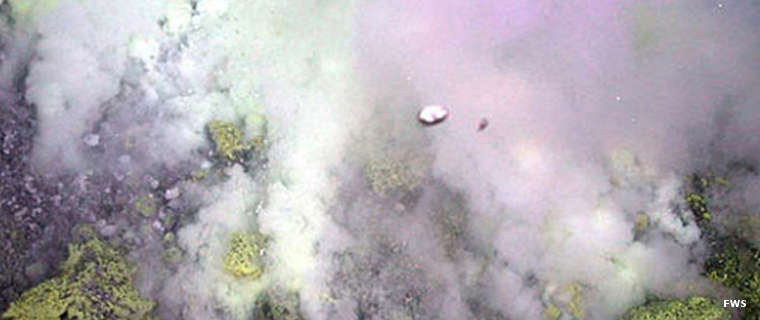Mariana Trench National Wildlife Refuge

View at the edge of an underwater lava flow

One mud sample removed from Challenger Deep by personnel aboard the deep dive vessel Kaiko yielded about 200 different organisms. The hydrostatic pressure where that sample was taken from was measured at 16,000 pounds per square inch. At that depth, the ocean floor is covered with a biogenic ooze composed mostly of the shells of various microscopic plankton, both phytoplankton and zooplankton. But in (and on) that primordial ooze is where most things live, that live down there anyway.
At a location known as Brimstone Pit at 1,837 feet in depth, explosive bursts from the vent are limited by the water pressure. Explosive bursts of rock and ash are also slowed by the water.

The Mariana Trench is located at that crack in the Earth's surface where the Pacific plate is plunging beneath the Philippine Sea plate and into the Earth's mantle. The sea floor is the geologically oldest sea floor on the planet but is virtually inaccessible due to the extreme depths and pressures. Humans have done very little exploration in the depths and almost nothing is known of the biological and ecological characteristics of the area.
Mariana Trench National Wildlife Refuge stretches about 940 nautical miles long and about 38 nautical miles wide in a crescent shape just east of the Northern Mariana Islands. The northern and southern boundaries coincide with the northern and southern boundaries of the US Exclusive Economic Zone around the Marianas.
